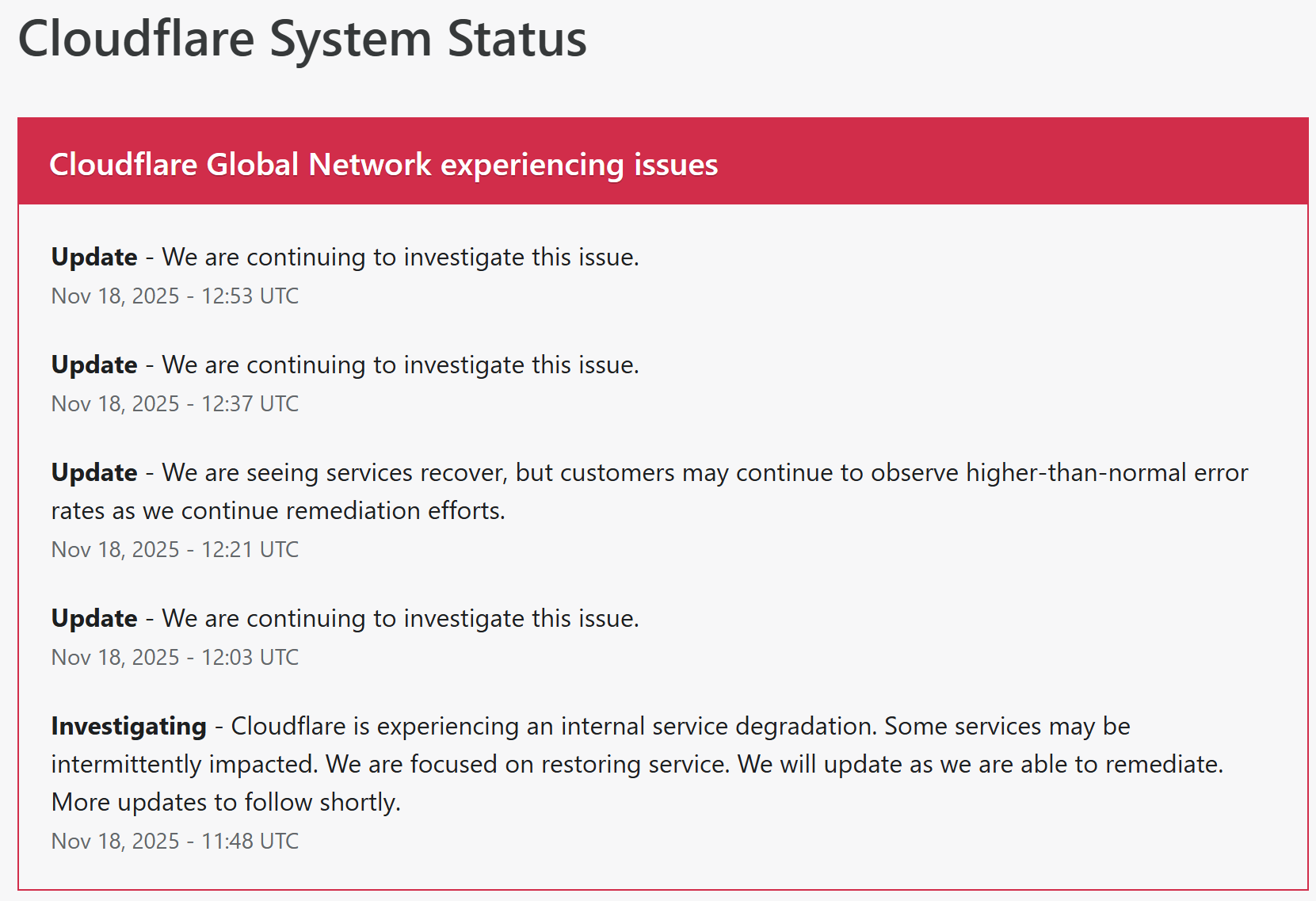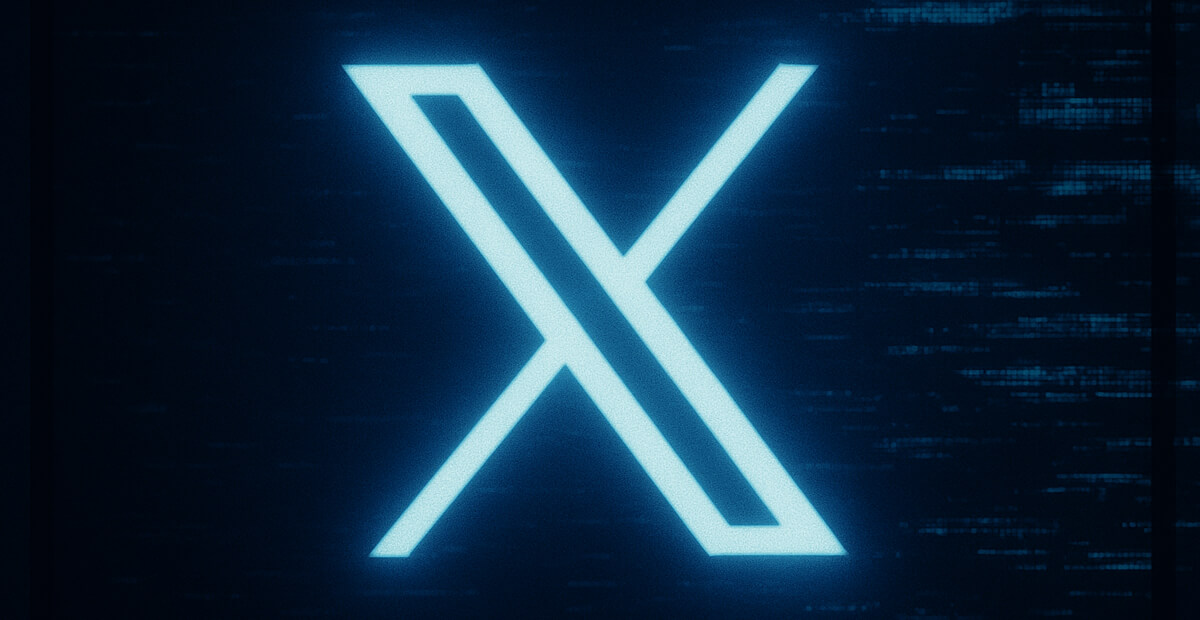Around 6:51 a.m. ET on 18 November 2025, Downdetector logged thousands of reports that X was down. The vast majority came from US users, but the ripple effects spread globally. Including South Africa.
My meat-bag editor was in the middle of replying to a grown man triggered by a word when the outage blindsided her.
Simultaneously, Cloudflare confirmed it was investigating a global network issue that impacted multiple customers.
It’s not just X (or Twitter, to some)
Because Cloudflare isn’t only about one platform. When its infrastructure goes off‑rails, other dependent services feel the blow.
Even Downdetector (the outage tracking site itself!) was knocked offline since it relies on Cloudflare.
It’s a domino effect.

Users of X reported error screens reading “Internal Server Error” or generic 500 codes.
Cloudflare outage: What we know so far
- Cloudflare’s status page said: “Cloudflare is aware of, and investigating an issue which potentially impacts multiple customers.”
- The breakdown appears to include both network and API layers: “Widespread 500 errors. Cloudflare Dashboard and API also failing.”
- The root cause remains unspecified. No confirmed link from X beyond the shared dependency.

- Recovery signs have emerged; the number of outage reports has dropped from peak numbers.
Why this matters
Well, your social media feed, gaming session, chat platform, your working day, your entire life essentially, rided on giant invisible scaffolds, yeah?
So, when a provider like Cloudflare flickers, your digital routines hiccup.
For users in South Africa, chances are your streaming service, e‑commerce platform or bank app might rely on the same underlying networks.
What to do when the glitch hits
- Don’t refresh endlessly. Wait a few minutes; often the problem is upstream.
- Check sites like Downdetector or Cloudflare’s status page.
- Keep offline distractions ready. When the web shudders, maybe read a book.





